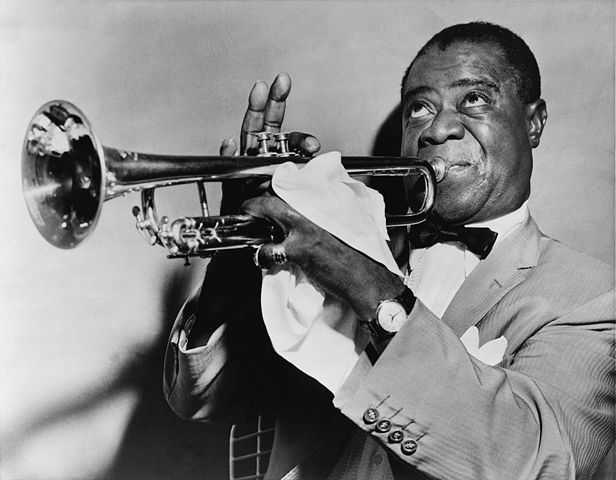*Image Credit: Wikimedia Commons In the toughest part of New Orleans, a poor black family gave birth to one of the shining lights in the city’s history. Louis Armstrong, who would go on to become one of the most popular figures of the Jazz Age, came into the world on August 4, 1901 in the Uptown neighborhood of Louisiana’s most famous city. By the time of his death in 1971, he had traveled the world playing his trumpet and singing with his trademark raspy voice. Growing up in poverty, Armstrong spent much of his youth looking for ways to help his mother pay the bills. Though she had to resort to prostitution, he found ways to at least generate a little income by working as a paperboy and hauling coal among the brothels in Storyville, the red light district of New Orleans. Between the bars and dance halls, not to mention the Fisk School for Boys, Armstrong found himself exposed to music in a variety of forms, but was particularly taken with the work of Joe “King” Oliver and Bunk Johnson – both of whom would end up as mentors to the young musician. Self-taught up until approximately the age of 11, Armstrong entered the New Orleans Home for Colored Waifs periodically due to run-ins with the law. There, he encountered professor Peter Davis, who helped him harness his talents with more traditional teaching, eventually naming Armstrong the band leader at the age of 13 – a position that gained him quite a bit of recognition as the Home musicians played around town. After moving out of the Home the following year, he began working in the New Orleans music scene at night and hauling coal by day. After a few years on the riverboats with the Fate Marable – where he became vastly more proficient with written music – Armstrong moved to Chicago in 1922 to join Oliver in the jazz explosion happening in the Windy City. Employed as a trumpeter in the Creole Jazz Band, Armstrong worked solely a musician for the first time in his life. With his reputation growing, he soon struck out on his own with his wife, Lil, heading first to New York in 1924 to join Fletcher Henderson’s band for a year before making his way back to Chicago. Returning to New York in 1929 after gaining wider notoriety (and getting divorced), Armstrong quickly became a hit on the scene. Playing at Connie’s Inn – a bar owned by organized crime, as many of the best clubs of the day were – he gathered more accolades as a vocalist as his records sold to a larger audience. By the early 1940s, he had settled in Queens and developed a penchant for reworking the hits of the day in his own style, all while heading up big bands. In 1947, as the swing craze slowed as dance halls across the country closed down, he began touring with a six-piece band and arguably became the face of jazz in America, appearing on the cover of TIME in early 1949. Over the next two decades, he would continue booking as many as 100 performances a year and, at the age of 63, earned the title of oldest person to have a #1 single when “Hello, Dolly!” reached the top of the charts (dislodging The Beatles, no less). On July 6, 1971, after continuing with a limited schedule as his health faltered, he died of a heart attack in his sleep at his home in Queens.
August 4, 1901 CE – Jazz Musician Louis Armstrong Born
*Image Credit: Wikimedia Commons In the toughest part of New Orleans, a poor black family gave birth to one of the shining lights in the city’s history. Louis Armstrong, who…
530
